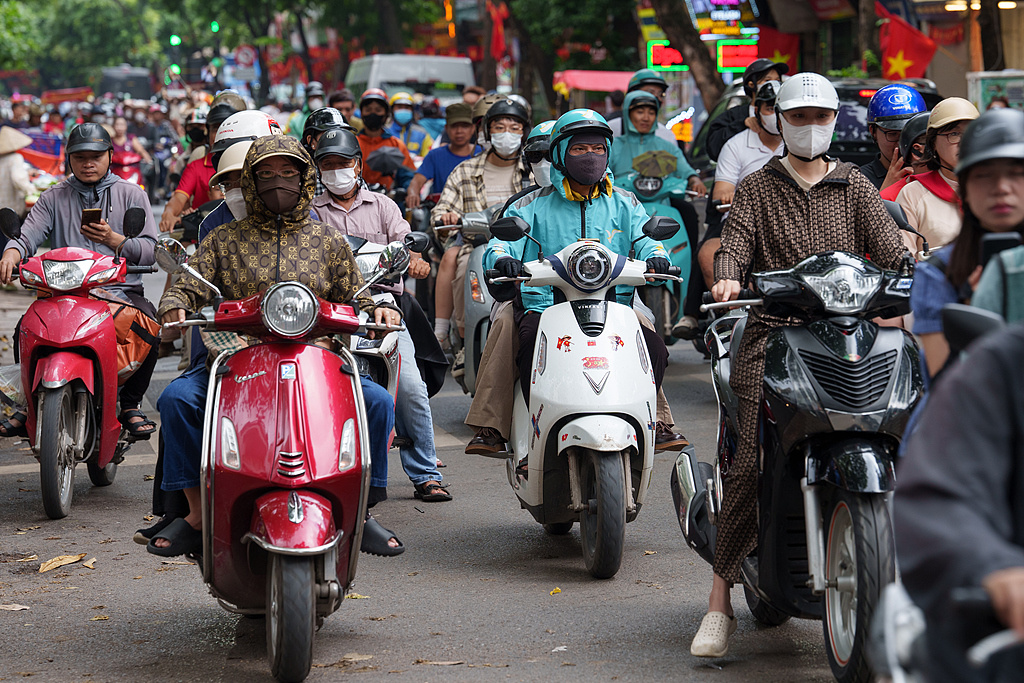
Amid the tropical monsoons of Southeast Asia, a "fuel-to-electric" revolution driven by policies, technologies, and markets is sweeping through the motorcycle industry. When the Indonesian government announced a complete ban on the sale of fuel-powered motorcycles by 2040 and Ho Chi Minh City in Vietnam initiated a ban on fuel-powered motorcycles in its downtown area, Japanese motorcycle companies, which once held a 70% market share in Southeast Asia, found themselves in a passive position due to their slow transformation. This transformation is not just about vying for market share but also reveals the deep-seated dilemmas faced by the Japanese industry in the era of electrification.
I. Passive Transformation under Policy Pressure: Strategic Lag of Japanese Enterprises
The electrification policies of Southeast Asian countries are like a double-edged sword, injecting vitality into the market while also exposing the strategic weaknesses of Japanese enterprises. Indonesia plans to replace 20% of fuel-powered motorcycles by 2025 through a purchase subsidy of 7 million Indonesian rupiah per vehicle. The Philippines has extended the import tariff reduction policy for electric motorcycles and their components until 2028. These measures have directly impacted the traditional advantage areas of Japanese enterprises. Brands like Honda and Yamaha once accounted for over 60% of fuel-powered motorcycle sales in Southeast Asia, but now the market penetration rate of their electric models is less than 5%.
The response from Japanese enterprises has been sluggish. Although Honda increased the proportion of hybrid vehicle sales to 24.2% in the 2025 fiscal year, it only sold 66,000 pure electric vehicles, far below its internal target. Its "hybrid-first" electrification strategy, in essence, uses the profits from the fuel-powered vehicle era to buffer the risks of transformation but also misses the opportunity to seize the market for electric two-wheelers. More severely, Japanese automakers have a long decision-making chain in Southeast Asia, with a model update cycle of 5-7 years. In contrast, Chinese brands can rely on their mature product lines in China to achieve "simultaneous launch in China and Southeast Asia six months later." This efficiency gap is further amplified during the policy dividend period.
II. Technological Gap and Cost Disadvantage: The "Electrification Disruption" in Japan's Supply Chain
The dilemma of Japan's motorcycle industry stems from the structural conflict between the supply chain advantages in the fuel-powered vehicle era and the demands of electrification. In the fuel-powered vehicle era, Japanese enterprises built a closed supply chain through a cross-shareholding model between "automakers and parts companies," ensuring product quality consistency and reducing localization costs. However, in the era of electrification, batteries, motors, and electric control systems have become the core, while Japan's global production capacity in these three areas accounts for only 12%, 8%, and 7% respectively, far lower than China's 60%, 45%, and 50%.
Take batteries as an example. Due to a lack of mineral resources, Japanese enterprises are highly dependent on imported rare metals such as lithium. In 2023, China's global market shares in positive electrode materials, negative electrode materials, separators, and electrolytes reached 89.4%, 93.5%, 87.4%, and 85.0% respectively. Japanese enterprises, on the other hand, have been forced to slow down battery factory construction due to unstable raw material supply. Nissan abandoned plans to build a factory in Japan, and Toyota postponed its battery project in Fukuoka Prefecture. This supply chain disruption has led to high costs for Japanese electric motorcycles. Chinese brands' prices in Southeast Asia are 15%-20% lower than those of Japanese competitors, and if Japanese enterprises want to maintain profits, they can only sacrifice market share.
III. Market Preference Mismatch: The "Demand Disruption" of Japanese Products
There is a significant mismatch between the demand for electric two-wheelers among Southeast Asian consumers and the product positioning of Japanese enterprises. The local market prefers economical, reliable in terms of range, and moderately priced models, while Japanese enterprises, having long dominated the fuel-powered vehicle market, continue to follow a high-end route for their electric products. For example, Honda's electric motorcycles launched in Vietnam are 1.8 times more expensive than local brands, leading to a rapid erosion of its market share by Chinese brands. In 2023, China's export volume of electric two-wheelers to Southeast Asia increased by 36% year-on-year, and brands like Yadea and Tailg already accounted for 30% of the local market in Indonesia and Vietnam.
In addition, Japanese enterprises have failed to fully grasp the special needs of the Southeast Asian market. Although the tropical climate provides a natural advantage for battery performance, the lack of charging infrastructure in second-tier and remote areas remains a bottleneck. Chinese brands have solved this problem through battery swapping models, while Japanese enterprises still adhere to the whole-vehicle charging solution, limiting user experience. This neglect of market demand has further exacerbated the passive position of Japanese enterprises.
IV. Breakthrough Path: From "Technology Following" to "Ecosystem Reconstruction"
Faced with the wave of electrification, Japanese enterprises are not without opportunities for a breakthrough, but they need to fundamentally reconstruct their industrial ecosystem. First, they need to abandon the "hybrid delay tactic" and accelerate the reserve of pure electric technology. Although Honda is evaluating all-solid-state batteries, it still relies on joint research and development with General Motors and LG in the short term. This "leveraging" model can reduce risks but also limits technological dominance. Second, they need to reconstruct the supply chain system by jointly purchasing rare materials with ASEAN countries and developing battery recycling technologies to reduce dependence on China. For example, Japan and ASEAN plan to cooperate in areas such as mineral resource procurement and biofuel investment. If implemented, this could alleviate raw material pressure.
More importantly, Japanese enterprises need to redefine product value. The demand for electric two-wheelers among Southeast Asian consumers has upgraded from a "means of transportation" to a "smart terminal," while Japanese products remain in the feature phone era. Chinese brands have transformed vehicles into smart consumer terminals by integrating functions such as GPS positioning, remote control, and collision warning. This "trendy attribute" is exactly what Japanese enterprises lack. If Japanese enterprises can infuse the craftsmanship spirit from the fuel-powered vehicle era into their electrified products, they may open up a differentiated competitive path.
V. The Collapse of the Old Order and the Reconstruction of a New Balance
The "fuel-to-electric" wave in Southeast Asia is essentially a microcosm of the global industrial restructuring. The dilemma of Japan's motorcycle industry exposes the common challenges faced by traditional industrial powers in the energy transition: how to balance existing advantages with emerging demands, how to maintain supply chain resilience during technological iterations, and how to redefine product value to adapt to market changes. This transformation has no end but only continuous game-playing and adjustments. For Japan, only by breaking free from the mindset of the "old ticket" can it find a new coordinate in the new journey of electrification.

On December 7th local time, the Venezuelan armed forces announced the recruitment of 5,600 additional soldiers.
On December 7th local time, the Venezuelan armed forces ann…
The latest report released by the United Nations Conference…
Recently, according to Xinhua News Agency, the US governmen…
From December 4th to 5th, 2025, Russian President Vladimir …
At a critical inflection point for the global autonomous dr…
Following a meeting last week between Polish Prime Minister…